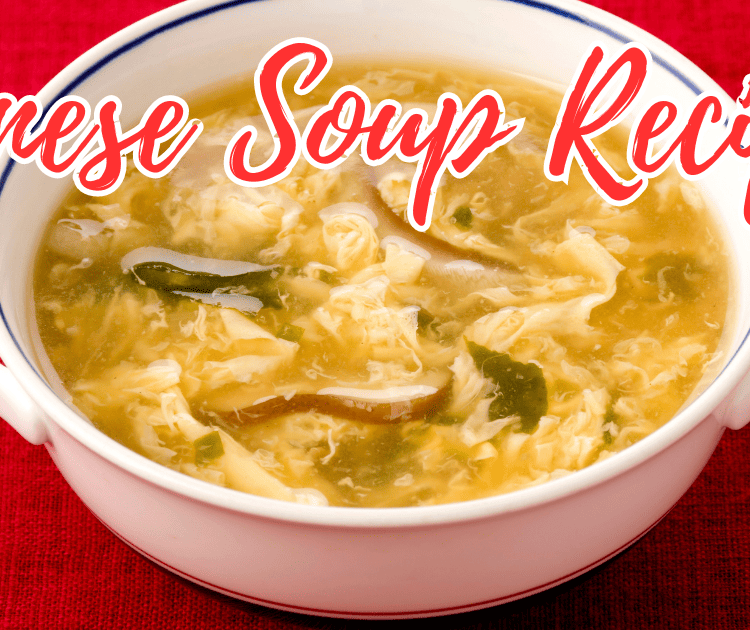Disclaimer: This post may contain affiliate links which means I may receive a small commission from purchases made through links. However, these are products that I would wholeheartedly recommend to my family and friends regardless if I make a small commission at no cost to you as a consumer.

Stir-frying is a popular cooking technique used in many cuisines around the world, especially in Asian cuisine. It’s a quick and easy way to cook vegetables, meats, and other ingredients while preserving their flavor and nutrients. The key is to cook food with higher temperature with very short cook time.
One of the essential elements of stir-frying is the oil used in the process. Different oils can have different effects on the taste, texture, and nutrition of the dish. Some oils are better suited for high-heat cooking, while others are best for low-heat or finishing purposes.
In this blog post, we will explore the best oils for stir-frying and their unique benefits and drawbacks. We’ll also reveal some clear winners and losers when it comes to choosing the right oil for your stir-fry recipes.
Considerations When Choosing Best Oil for Stir Fry
There are a few things we should consider when finding the best oil for stir fry. Let’s go over this first before diving into the list of oils on our list.
1. High Smoke Point
When selecting oil for stir-frying, the main factor to consider is its smoke point. Method of stir fry cooking method involves cooking at high heat and short cooking time. The higher the smoke point, the better it will be for high-heat cooking. Oils with a low smoke point can break down and become bitter or acrid in flavor when heated, not to mentioned it might be unhealthy.
2. Neutral Flavor Profile
When choosing an oil for your stir-fry, flavor is an important consideration. Many oils have a distinct flavor that can be overpowering or underwhelming in certain dishes. So, it’s best to pick an oil that complements the flavors of your dish instead of clashing with them.
3. Availability and Accessibility
Finally, you should also consider availability when picking an oil for stir-frying. Some oils might be hard to find in your area, so make sure you have access to the oil before committing to it. Additionally, some oils can be more expensive than others, so keep that in mind when making your selection.
Which Is The Best Oil for Stir Fry?

1. Avocado Oil
Avocado oil is the best oil for stir fry due to its high smoke point, neutral taste, and heart-healthy benefits. It has a smoke point of 520F/270C which makes it a great option for high-heat cooking such as stir frying. Its neutral flavor allows it to blend well with any seasonings or ingredients that you may be stirring in your dish.
Avocado oil is high in oleic acid, which is an unsaturated fat. It contains vitamin E and helps the body absorb other fat-soluble vitamins. It is a great source of monounsaturated fat which is linked to lowering LDL (the bad) cholesterol and increase HDL (the good) cholesterol. For more information on health benefits of avocado oil, please see this article.
All these factors make avocado oil an excellent choice when stir frying! I would even argue that this is the healthiest cooking oils you’ll find. This is the main oil that I use in my household, not just for stir fry dishes, but for almost everything else.
Since avocados are on the more expensive side, researches have shown that some of the avocado oil on the market are mixed with less expensive oil like soybean oil, sunflower oil, etc. to increase profit margin. Please do you own research on which brand to purchase. In my household, Chosen is the only brand you use.
2. Olive Oil (Light/Refined)
Light or refined olive oil is made from pure olive oil. It has a high smoke point of 465F/240C when compared to virgin or extra-virgin olive oil (which are finishing oil or dressing oil). It’s ideal for sautéing, baking, and deep frying since it can withstand higher temperatures without burning.
Light or refined olive oil lacks some of the flavor of virgin/extra-virgin olive oil due to the additional processing. It should, however, work just fine for stir fry dishes since we do not want strong flavor in our oil to begin with.
Olive oil is widely used in Mediterranean diet, which is considered a heart-healthy diet. Studies have shown that diets rich in polyunsaturated fat (omega 3 and omega 6) can lower LDL cholesterol levels while increasing HDL cholesterol levels, which is beneficial for our cardiovascular health. So olive oil is a great choice if you are looking to make a healthier stir fry dish!
Store light/refined olive oil in a dark and cool place away from direct sunlight to keep it fresh for longer.
3. Canola Oil
Canola oil is another great option for stir fry. It also has a high smoke point of 400F/204C which makes it suitable for use in high heat cooking. Canola oil has a light, neutral flavor which allows it to easily blend into your dish without overpowering other flavors.
Additionally, canola oil is packed with omega-3 fatty acids, helping to make it a heart-healthy choice. Consider using canola oil when stir frying for your next meal!
4. Peanut Oil
Peanut oil also has a high smoke point of 450F/232C and is another great option when stir frying. It has a mild nutty flavor which may add complexity to your dish. However it may overpower more subtle flavors so be careful when using it with other ingredients if you want to preserve the flavor of certain seasonings.
Peanut oil is rich in vitamin E, an antioxidant that helps protect your body from oxidative damage and may reduce inflammation. Overall, peanut oil makes a great option for stir frying!
5. Corn Oil
Corn oil is made from the germ of the corn kernel and has a neutral flavor. It has a high smoke point of 450F/232C. It’s ideal for frying, sautéing, baking, and salad dressings since it can withstand high temperatures without burning. It is a popular choice in Asian households.
Corn oil should be stored in a cool, dark place away from direct sunlight to keep it fresh for longer.
For more information on stir fry, please see this blog post.
Oils That Does Not Work for Stir Fry
1. Coconut Oil (Refined)
Coconut oil that are refined has a higher smoke point of 450F/232C when compared to the virgin version which has a slightly lower smoke point of 350F/177C. For the purposes of stir fry dishes, we should go with the refined version of this oil.
The unique flavor of coconut oil can add another dimension to your dish and is great for recipes that call for a tropical twist. Dishes like pineapple fried rice would work really well with this oil. However, it might not work well with dishes that are more on the savory side.
Coconut oil is also rich in lauric acid and medium chain fatty acids, both of which may be beneficial to your health when consumed in moderation. It’s important to note that coconut oil will solidify at room temperature, so it should be stored in a cool place before use.
Keep in mind that coconut oil can impart a strong flavor to your dishes, which may not be desirable for every recipe. When stir frying with coconut oil, it’s best to use minimal amounts and keep the heat low. Because it is not an all-purpose oil that’s suitable for everyday stir fry uses, it is not on the top of our list.
2. Sesame Oil
Sesame oil has a moderately medium smoke point of 410F/210C and a strong nutty flavor (especially the toasted sesame oil), making it an ideal choice as a finishing oil which you drizzle on the food after the heat is turned off. However, it is not suitable for stir fry cooking method since it can burn quickly and easily.
Even though not ideal for stir frying in high heat, many Asian country often use sesame oil in sautés dishes.
High-quality sesame oil is also rich in antioxidants and vitamins, so it can be a healthy addition to your cooking. When using sesame oil its important to note that the flavor may overpower other ingredients in the dish, so you may want to use it sparingly.
3. Rice Bran Oil
Rice bran oil has a relatively high smoke point of 490F/254C, making it ideal for stir fry cooking. It is a mild flavor, so it will not overpower other flavors in the dish and blends seamlessly into many recipes.
The reason why it is not on the best oil list is due to it accessibility. It is not as popular
One unique property of rice bran oil is its high levels of vitamin E which helps protect cells from damage and also has anti-aging properties.
This oil can also be used for baking, as it won’t become bitter when heated at a high temperature. Rice bran oil is quickly becoming popular in many countries due to its health benefits, so you may want to give it a try the next time you are cooking.
4. Grapeseed Oil
Grapeseed oil is made from the seeds of grapes, and it has a slightly higher smoke point of 420F/215C, compared to sesame oil. This makes it ideal only for pan-frying, sautéing, and other medium-heat methods that require temperature control. It also has a mild flavor that can add depth to your dish without overpowering other ingredients. However, it is not suitable for stir frying due to the smoke point.
Grapeseed oil is also rich in antioxidants and vitamins, making it a healthy addition to your kitchen arsenal. When using grapeseed oil, it should not be used in dishes where very high temperatures are required.
Additionally, when using grapeseed oil you should also keep in mind that it has a fairly high fat content. Therefore, it is important to monitor your intake of the oil and use it in moderation to prevent any adverse health effects.
5. Soybean Oil
Soybean oil is a type of vegetable oil that has a relatively high smoke point of 450F/232C. It has a neutral flavor, making it seemed ideal for dishes where you want the flavors of other ingredients to be prominent. It used to be a very popular choice in Asian household.
However, in the last decade of so, soybean has been controversial in terms of it’s health risk. The more prominent ones are digestive upset and altering thyroid function. There are pros and cons on consuming soy products. I personally do consume soy products, but everything in moderation, right? Therefore, soybean oil is not an everyday type of oil that I would use or keep in my kitchen.
Also note that soybean oil does not have a long shelf life and should be stored in a cool, dry place. It is also important to note that soybean oil may contain allergens and should be avoided by those with allergies or sensitivities.
Conclusion
In conclusion, the best oil for stir-fry ultimately depends on your personal preference and cooking needs. Selecting the best oil for stir-fry requires careful research and consideration of flavor profile, smoke point, and availability as discussed above. Ultimately, experimentation and personal preference will guide you in finding the perfect oil that suits your dish perfectly and you will be rewarded with a delicious meal!
Frequently Asked Questions
What is the best oil to use for stir-frying?
The best oil for stir-frying will have a smoke point of 450F/232C or above, has a neutral flavor profile, and easily accessible. The top choices are avocado oil, light/refined olive oil, canola oil, peanut oil, and corn oil are all good choice.
What oil is healthiest for stir-fry?
Avocado oil can withstand high temperature stir fry cooking. It is high in oleic acid, which is an unsaturated fat. It contains vitamin E and helps the body absorb other fat-soluable vitamins. It is a great source of monounsaturated fat which is linked to lowering LDL (the bad) cholesterol and increase HDL (the good) cholesterol.
What oil do Chinese use for stir-fry?
For years, corn and canola oil are the most popular choices in Chinese households. However, in the recent years, with the gaining popularity of avocado oil given it’s healthy benefits, it is becoming the oil of choice for Chinese cooking.
Is olive oil OK for stir-fry?
Light or refined version of olive oil is better than virgin or extra-virgin variety when it comes to stir fry due to it’s higher smoke point.





I’ve been stir-frying more often and this article was very helpful! I was using peanut oil, but after reading this I am going to try avocado oil.
These oils are really good for stir fry.
I never realised some oils were best to use/avoid for stir frys! Heard amazing things about avocado oil but yet to try it – usually always use olive oil!
Great post! I mostly use olive oil or just an air fryer!
Great post! As someone who loves stir fry, but isn’t the best at making it–this was really helpful!
Such a useful article, oils do play a role to get the best results. Thanks for sharing!
This was such an amazing, informative article. I learned so much! I’m yet to try avocado oil.
I honestly didn’t think it mattered what type of oil you used when making stir fry! I usually use olive oil but may try avocado oil in the near future!
I love your blog Susana, I am definitely going to subscribe. Thanks for sharing
Thanks for sharing this! I had no idea. I don’t cook a lot of stir but I usually use sesame or coconut oils when I cook, sometimes olive oil. But I had no idea that sesame and coconut oils were not good for stir-frying.
I always forget about avocado oil. I have never tried using that in a stir fry. Thanks for the suggestion!!
It is an interesting read! We mainly use avocado, olive oil, and coconut oil. I`ll skip coconut oil for the next stir fry. Thank you for sharing.